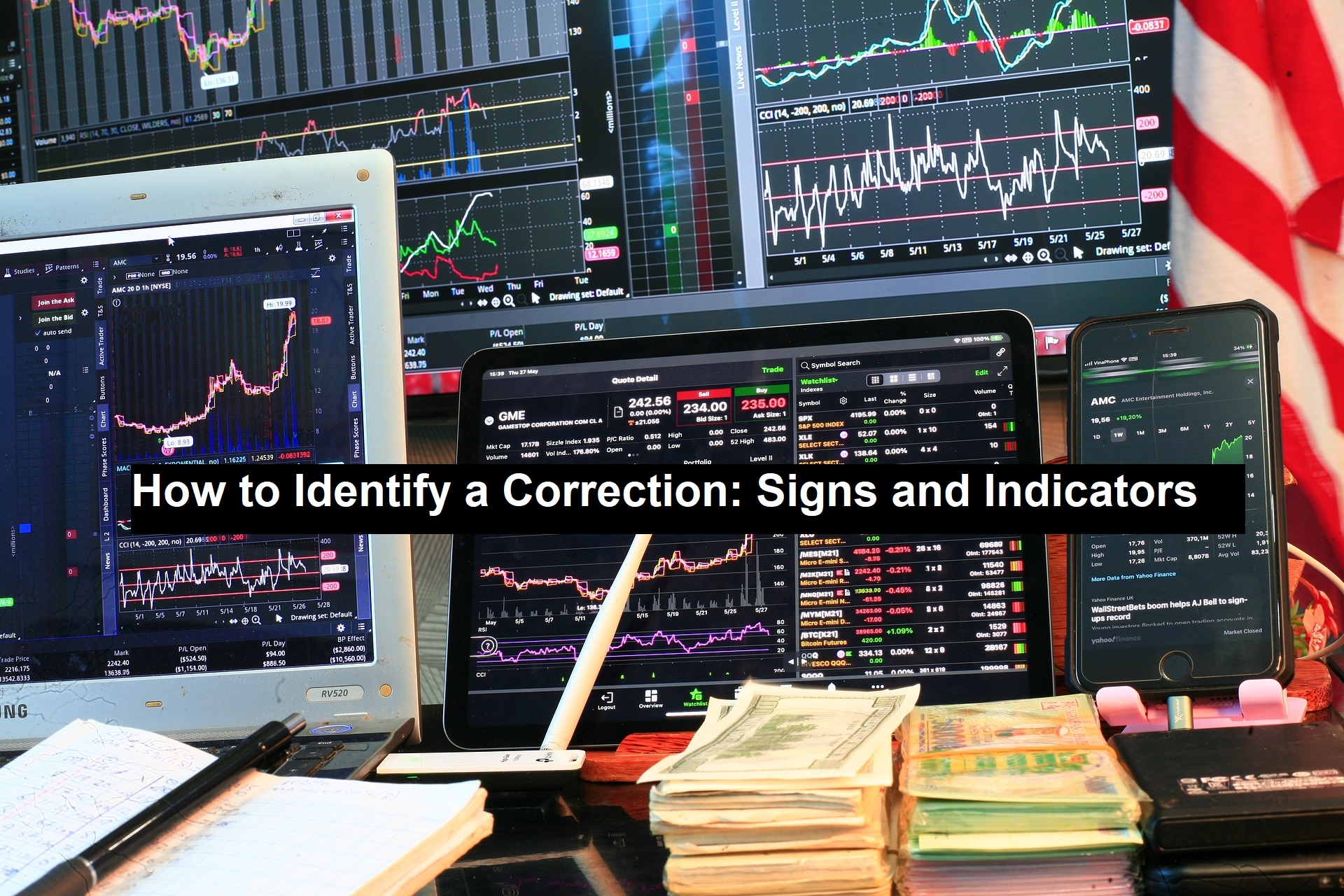Market corrections can send shivers down the spines of even the most seasoned investors. A correction, typically defined as a decline of 10% or more in a stock index from its recent high, is a natural part of market cycles. Understanding how to identify these corrections is crucial for risk management, seizing buying opportunities, and maintaining a strategic approach to investing.
Understanding Market Corrections
Market corrections come in various forms, each driven by different factors. The most common types include technical corrections and fundamental corrections. A technical correction may arise from overbought conditions, where stock prices rise excessively, leading to a pullback. On the other hand, a fundamental correction usually results from negative economic data or changes in market sentiment, prompting a broader sell-off.
The historical context of market corrections can provide valuable insights. Looking back at notable corrections can help investors understand the triggers and consequences. For instance, during the dot-com bubble burst in the early 2000s, many investors were caught off guard by the swift decline in technology stocks, highlighting the importance of vigilance in monitoring market trends. Explore this original site for more information.
Signs of a Potential Correction
Recognizing the signs of a potential correction involves analysing price action and volume indicators. A significant drop in stock prices often serves as the first warning sign. When a major index falls substantially in a short period, it can indicate that investors are losing confidence. Alongside price movements, increased volatility can also signal impending corrections. Sudden spikes in volatility often precede sharp market downturns, making it essential for investors to stay alert.
Volume is another critical factor in identifying corrections. Sudden spikes in trading volume can suggest that investors are rapidly repositioning their portfolios. Conversely, a decline in volume during an uptrend can signal a weakening rally, indicating that a correction may be on the horizon. Analysing these indicators allows investors to gauge market momentum and make informed decisions.
Read: Invest Today: Is Property Investment Profitable In 2024?
Technical Indicators
Technical indicators are vital tools for understanding market corrections. Moving averages, for instance, play a significant role in this analysis. By examining short-term and long-term moving averages, investors can identify trends and potential reversals. A “golden cross,” where a short-term moving average crosses above a long-term moving average, typically signals bullish sentiment. Conversely, a “death cross,” where the short-term average falls below the long-term average, often indicates bearish trends and potential corrections.
A key indicator to consider is the Relative Strength Index (RSI), which serves as a momentum oscillator that evaluates the pace and direction of price changes. This tool assists investors in recognizing when an asset is overbought or oversold. Specifically, if the RSI exceeds 70, it may indicate that a stock has become overbought and could be poised for a correction. On the other hand, an RSI reading below 30 suggests oversold conditions, which might present a favourable buying opportunity.
Market Sentiment Indicators
Market sentiment plays a crucial role in identifying corrections. Investor sentiment surveys, such as the American Association of Individual Investors (AAII) Sentiment Survey, provide valuable insights into how investors feel about the market. A shift from optimism to pessimism can indicate an impending correction, as fear often leads to selling pressure.
The put/call ratio is another sentiment indicator that helps gauge market sentiment. This ratio compares the trading volume of put options (bearish bets) to call options (bullish bets). A rising put/call ratio suggests increasing bearish sentiment, potentially signalling an approaching correction. Conversely, a low ratio may indicate excessive optimism, which can be a precursor to a market downturn.
Economic Indicators
Economic indicators significantly influence market corrections. Interest rates, for example, play a pivotal role in shaping investor sentiment. When central banks raise interest rates, borrowing costs increase, which can dampen consumer spending and business investment. Such shifts in monetary policy can trigger corrections as investors reassess the economic landscape.
Key economic reports also warrant attention. Indicators such as Gross Domestic Product (GDP) growth, unemployment rates, and consumer confidence can provide clues about the economy’s health. A sudden downturn in these indicators can lead to a negative market reaction, resulting in corrections as investors adjust their expectations.
Behavioural Indicators
Behavioural indicators can offer additional insights into market corrections. Market hype and speculation often signal that a correction is approaching. When investors exhibit excessive enthusiasm, fueled by trends and headlines, it can lead to unsustainable price levels. This euphoria often precedes corrections, as reality sets in and prices realign with fundamental values.
Herd behaviour is another psychological aspect that can foreshadow corrections. When a large number of investors act on the same information or sentiment, it can lead to rapid market movements. Recognizing when the market is becoming overly crowded in one direction can help investors prepare for potential corrections.
Conclusion
Identifying market corrections involves a multifaceted approach, incorporating various signs and indicators. By understanding price action, technical indicators, market sentiment, economic factors, and behavioural psychology, investors can enhance their ability to recognize corrections. Staying informed and proactive is essential for navigating the ever-changing landscape of financial markets. By equipping themselves with the right knowledge, investors can make informed decisions and seize opportunities amidst market fluctuations.



